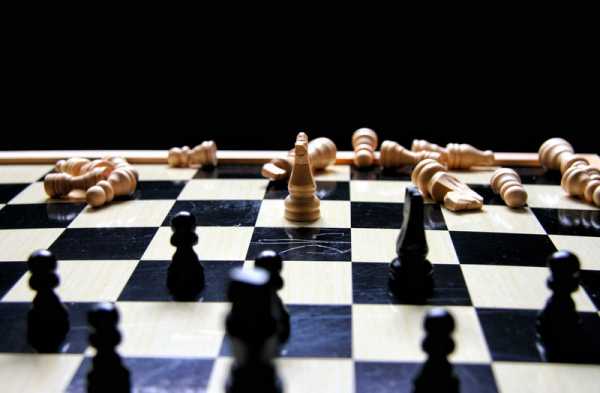
The EU's collective response to cutting Russia's gas exports cushioned the blow, but the main reasons were prosaic — a mild winter and exorbitant spending (Photo: Louis Hansel)
Let us begin with the good news. The EU managed to weather the biggest energy crisis in its history and restore stability within the energy market. As winter thaws, European leaders are breathing a collective sigh of relief after a protracted period of natural gas shortages, emergency energy shipments and astronomical energy costs.
There is a sense of cautious optimism as natural gas prices in Europe have continuously fallen since December last year. EU gas storage is in proper shape with 50-55 percent average capacity projected for April, which is a good starting point in preparation for next winter.
The EU has clearly showed that it can cope with less volumes of Russian natural gas and resist Gazprom’s energy blackmail. European member states accomplished a collective feat by reducing their natural gas consumption by almost 20 percent.
We are witnessing increased investment in new LNG import capacities and European capitals are exploring novel opportunities for joint purchases of natural gas. In parallel, the EU is holding a united front through an embargo on seaborne crude oil imports from Russia and leads a collective effort with the G7 on an international price cap on Russian oil.
Now for the bad news.
The EU’s collective response cushioned the blow, but it wasn’t the ultimate buttress for braving the energy storm. The main reasons were more prosaic — a mild winter and exorbitant spending. Europe experienced the second warmest winter on record, which substantially reduced pressure on EU gas storages.
Additionally, EU member states spent an astronomic amount of public funds to shield households and industry. From late 2021 until early 2023, the EU allocated and earmarked close to €700bn in different state support measures on energy. In effect, a number of EU countries have allocated more than four percent of their GDP to tackle the energy crisis.
Not to mention the additional funds spent on emergency shipments of LNG from the US and Qatar, which came with a hefty price tag. This has placed additional strain on national coffers already in the red and is a constant fuel for inflation.
The crisis has left its damaging mark, especially if you zoom in more closely on European industry. Granted, EU gas price benchmarks are currently gravitating around 40 euro/MWh, which is a welcome relief.
However, compare this with the average numbers of the last 10 years and you’ll see that today’s prices are more than double.
The same volatility applies to electricity and oil prices, as well. European glass and chemicals manufacturers are constantly struggling with this unpredictability. Output of aluminium in Europe has fallen by half, as a number of smelters are closing production. EU fertiliser production also took a huge hit last year, due to a 70 percent drop of ammonia production linked to increased gas prices.
The biggest problem is this volatility becoming embedded. The continent has pivoted to increased LNG shipments, but they remain costly and the market is extremely tight. The International Energy Agency (IEA) has already warned of a potential energy crunch later in 2023 given the low amounts of new LNG supply coming to the market. The EU will also face more aggressive competition as Asian economies bounce back.
Sign up for EUobserver’s daily newsletter
All the stories we publish, sent at 7.30 AM.
By signing up, you agree to our Terms of Use and Privacy Policy.
China already secured a massive deal with Qatar, while many emerging economies are also jumping at every opportunity.
Worryingly, most of Europe’s LNG imports will come from the spot market, not long-term contracts, which means higher prices. US exporters are already puzzled by the refusal of many EU member states to commit to long-term LNG contracts, due to the bloc’s climate agenda.
Simply put, the EU hasn’t guaranteed its long-term energy supply. The IEA has estimated that in 2023, we are facing a supply gap close to 60 billion cubic metres (bcm), which is close to 15 percent of EU baseline gas demand. European leaders cannot bet on benevolent weather as their running strategy. Certainly, overcoming a potential gas shortage requires the continuation of successful energy efficiency measures and the roll-out of renewable infrastructure.
Fundamentally though, this cannot be the only message coming from Brussels. Nuclear and hydropower output will have an important role to play in compensating electricity production. Most importantly, Europe should finally come to terms with the fact that it needs to ramp up its own domestic production as much as possible, as well as negotiate long-term import contracts for natural gas from trusted alternatives. The political mantras that we can replace more than 100 bcm of Russian gas in the short-term with a combination of heat pumps and solar/wind installations is a damaging delusion.
It is somewhat ironic that so much institutional ink is spent on drafting new initiatives for strengthening our industry or ‘net-zero manufacturing’ while our core European businesses are denied access to abundant and affordable energy. You cannot outcompete the US or China if you don’t have an adequate energy strategy that provides the fundamentals for a successful industrial performance.
The EU-Russia energy war is far from over. European leaders need to make a shift towards an energy policy of pragmatic realism, which is best equipped for a war of attrition with Moscow. Our immediate collective priority is energy security and price affordability of energy resources.
Everything else is either secondary or just wishful thinking.
Source: euobserver.com



